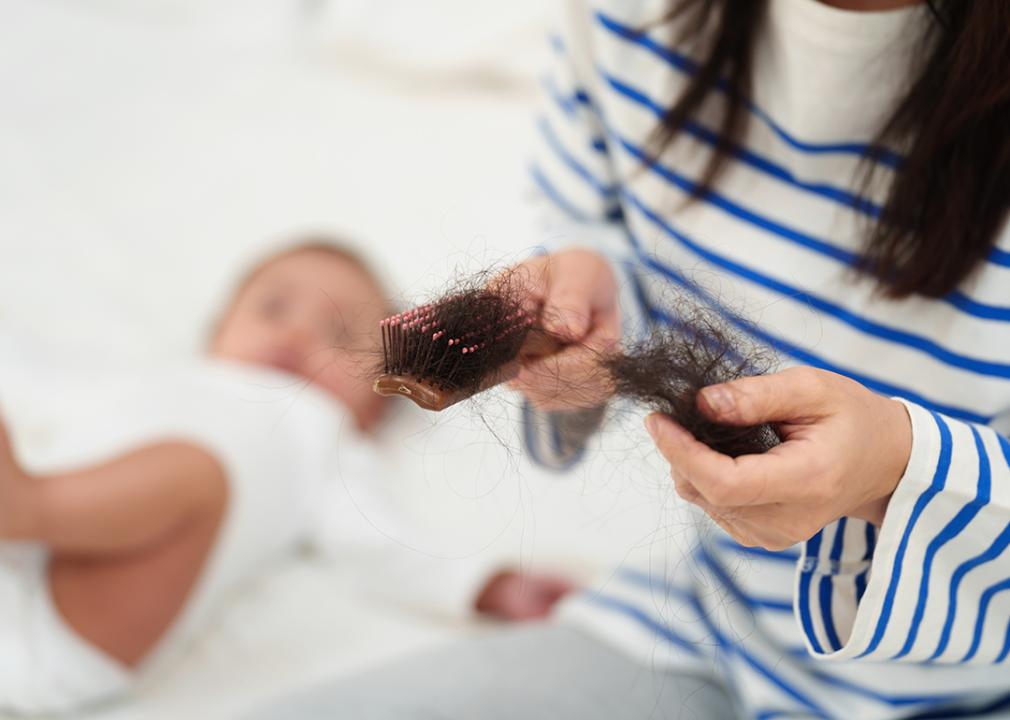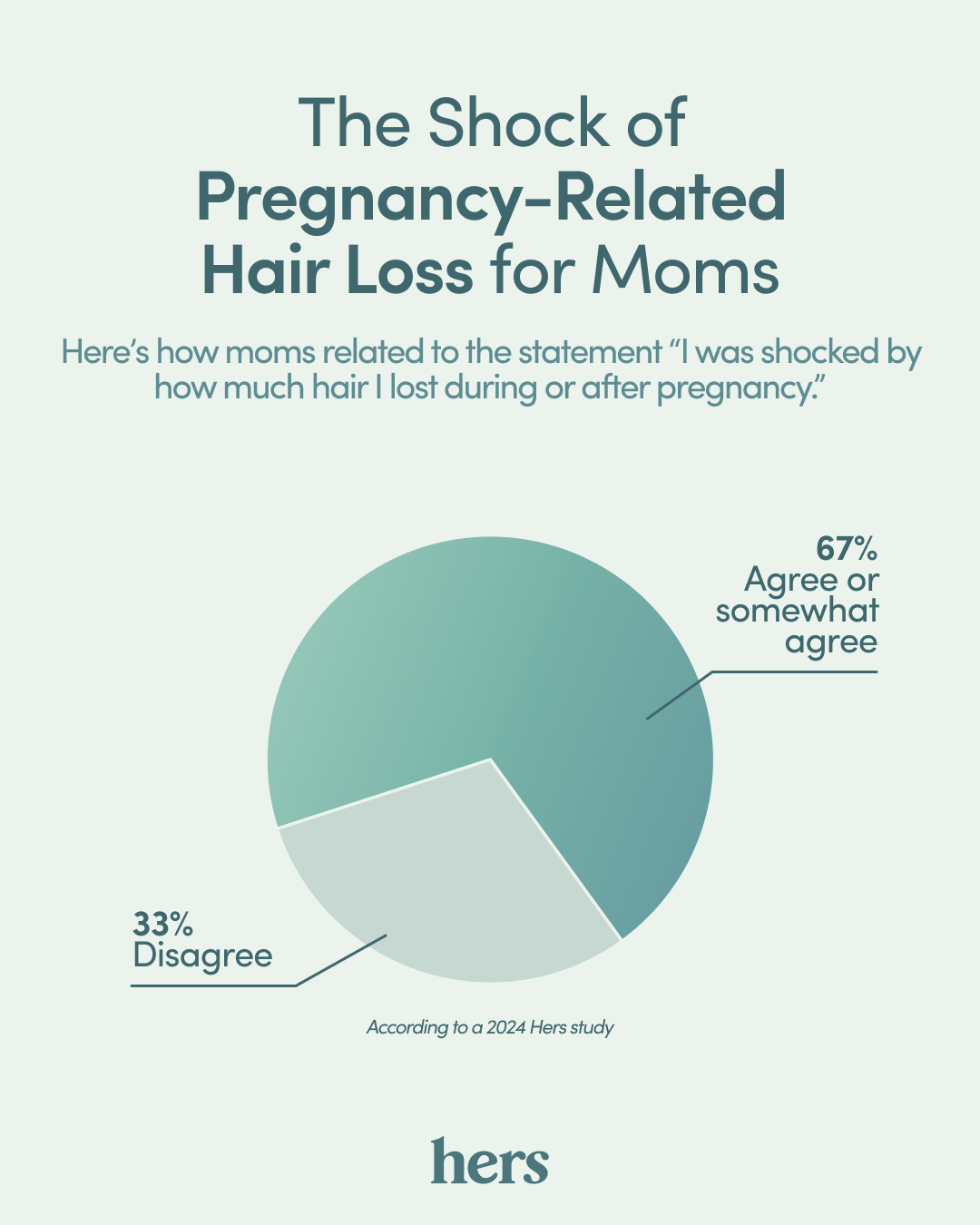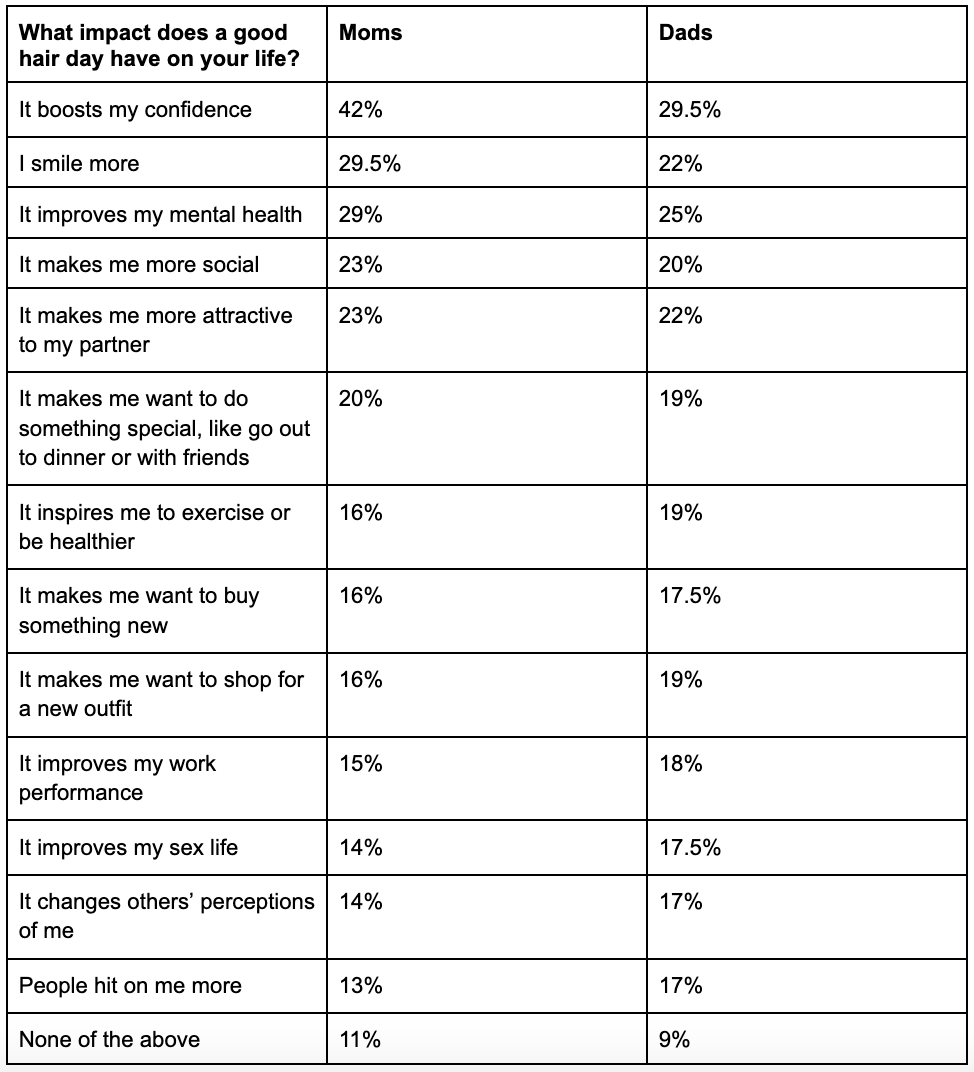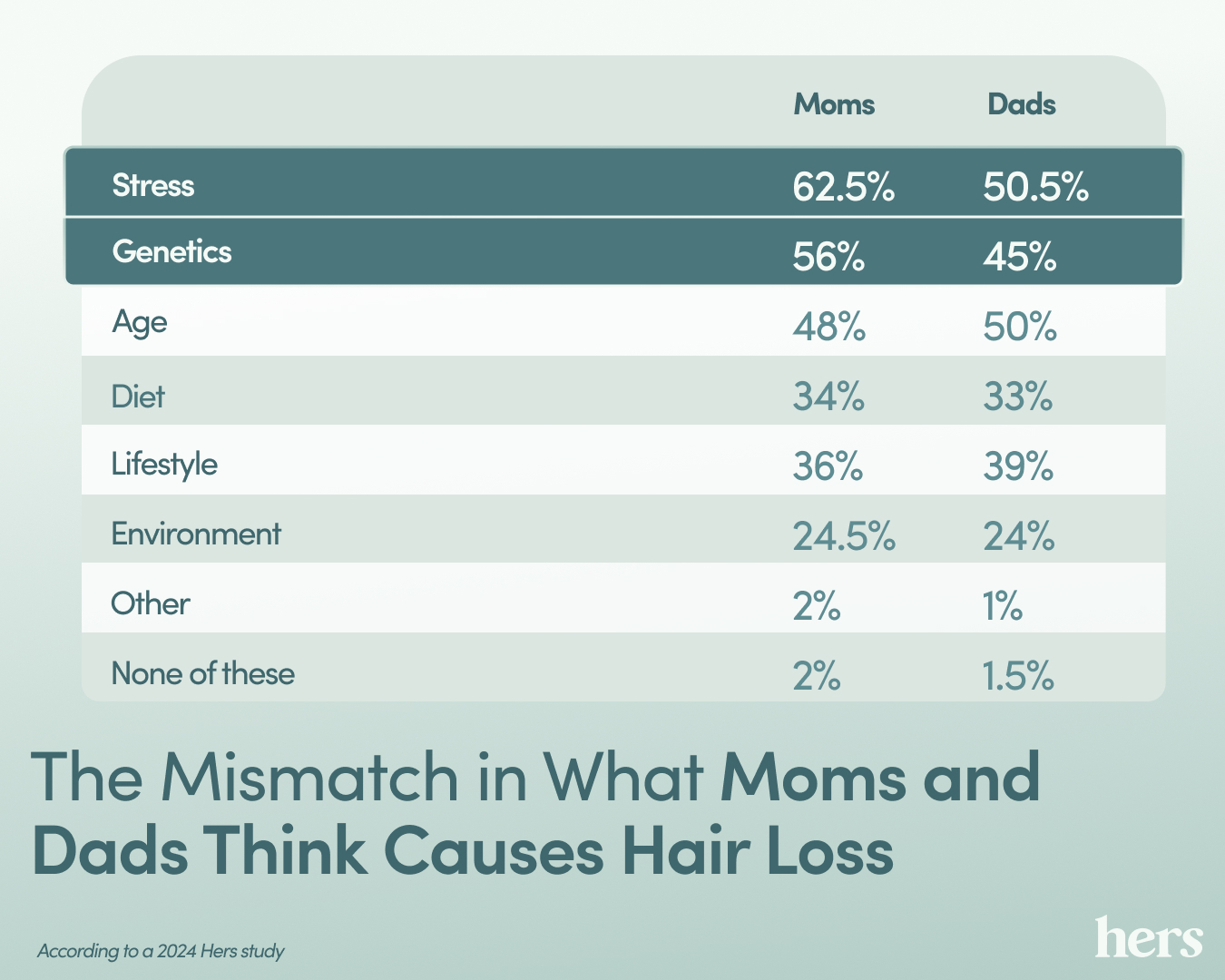2/3 of moms report being shocked by postpartum hair loss, so why is no one talking about it?

BaLL LunLa // Shutterstock
2/3 of moms report being shocked by postpartum hair loss, so why is no one talking about it?
A mother looks at a brush with excessive hair fall and her newborn baby is beside her.
Ask any mom about the biggest changes in their life after giving birth and hair loss may not come to mind. But ask moms if they were shocked by how much hair they lost as a result of pregnancy and it’s likely they will answer with a resounding “yes!”
In a study conducted by Hers, two-thirds of mothers (67%) agree or somewhat agree that they were shocked by the amount of hair they lost during or after pregnancy.
![]()

Hers
Postpartum Hair Loss Explained
The shock of pregnancy-related hair loss for moms data pie chart.
Postpartum hair loss is actually quite common. Known as telogen effluvium, it’s a form of temporary hair loss that can occur as a result of things like extreme stress, illness, medication side effects, traumatic events to the body (like surgery or childbirth), and sudden hormonal changes.
What’s happening physiologically has to do with the hair growth cycle. Each hair goes through a growing phase (anagen), transition phase (catagen), and resting phase (telogen) before the hair falls out (exogen) and the cycle starts again.
During and after childbirth, hormonal shifts can cause many hairs to go from the anagen phase to the telogen phase around the same time, and those hairs then fall out a few months later. The good news: postpartum hair loss usually stops about six to 12 months after childbirth.
But those 12 months can have a major impact on a mom’s sense of self.
Power Hair: The Quantifiable Impact of Hair Loss for Moms
Hair plays a significant role in building self-esteem, particularly for women. In fact, according to our study, 85% of women and 88% of moms agree, “It’s amazing how much a good hair day can boost my mood,” and 42% of moms say a good hair day boosts their confidence, as compared to just 29.5% of dads who feel the same.
Uplifting a new mom’s mood is arguably as important as anything else during this transitional time (the CDC reports about 1 in 8 new moms experience symptoms of postpartum depression). Good hair, while not life changing, is an instant mood-booster. It’s also a simple way for moms to feel back in touch with their pre-mom selves.
Not only is the effect of good hair real, it is also quantifiable. Nearly 9 in 10 (89%) of moms say that having good hair impacts their everyday life in one or more ways; this compares to 85% of women and 85% of people overall.
This may not seem like a big difference, but it means nearly all moms who lose hair are likely to experience one or more negative effects in their day-to-day life. The biggest impact is a loss of confidence, followed by smiling less, feeling less mentally in-check, having fewer social connections, and feeling less attractive to their partner.
It may even have financial implications: 20% of moms say they are more likely to go out to dinner or out with friends when they have a good hair day; 16% say they treat themselves to something new; and an equal 16% say they go shopping for a new outfit.

Hers
The Female Factor: Women Are Worried About Hair Loss, Too
A table listing moms and dads’ answers to the question “What impact does having a good hair day have in your life?”.
New moms may not be voicing concerns about hair loss because there’s less awareness of female hair loss compared to male hair loss. There’s a common misconception that only men in their midlife lose their hair. In fact, 85% of respondents believe hair loss is age-related (it can be, but isn’t necessarily).
When asked what age hair loss happens, respondents say it’s around 44 for women and 39 for men (in reality, it can happen at any time). Considering the average age of new mothers is just 27.3, it’s no wonder young women may feel stigma about discussing lost locks; it’s more than a decade before they thought it was even possible for them.
However, younger women are increasingly expressing concerns about their hair’s volume and thickness. Fully 24% of all women report dissatisfaction with their hair, compared to 13% of men.
And Gen Z women, in particular, are more likely to proactively take steps to improve their hair as compared to women in older generations. Nearly 3 in 4 (73%) of Gen Z women have tried a hair growth product, compared to 61% of Millennial women and 39% of Gen X women. On average, these women are 22, about 20 years younger than when hair loss is perceived to be a problem for women.
Gen Z men are also more likely to obsess over their hair.

Hers
Stress Test: Does Stress Cause Hair Loss?
The mismatch in what moms and dads think causes hair loss data infographic.
Many people—and women and moms in particular—believe hair loss is directly related to stress (it can be, but isn’t always). In fact, 62.5% of moms feel this is the case vs. 50.5% of dads, and 57.5% of respondents overall.
This may make moms wonder if it’s their fault that they’re losing their hair. It’s not—in reality most moms experience some hair loss.
Hair loss happens for many reasons, including genetics, age, and overall health. Stress also plays a part. With mental health concerns on the rise, it’s no wonder that parents name stress as the top perceived reason for hair loss, even above genetics and age. Here’s the full picture of what moms vs. dads perceive to be the reasons why we lose our hair.
Tips for Dealing With Postpartum Hair Loss
If you’re experiencing postpartum hair loss, you’re not alone. And while excessive shedding from telogen effluvium typically resolves itself in time, there are some things you can do to help in the meantime.
- Consider minoxidil: While there’s no specific treatment for telogen effluvium, minoxidil—a medication that’s approved for female pattern hair loss—can be used off-label for telogen effluvium. Off-label means the medication can be prescribed for a different purpose (like postpartum hair loss) at the discretion of a healthcare provider.
- Keep up with your vitamins: Vitamins and minerals are key for supporting hair health. Continuing to take your prenatal vitamins after birth can supplement a healthy diet to make sure your body has the nutrients it needs for healthy hair. While this won’t impact telogen effluvium, if you are also experiencing hair loss due to a nutrient deficiency, vitamins can be helpful.
- Avoid tight hairstyles: Avoid hairstyles that pull tightly on the hair, such as tight ponytails or braids, and opt for looser styles that reduce tension on the hair follicles. This also won’t help with telogen effluvium specifically, but can be a good tip if you’re experiencing another type of hair loss known as traction alopecia.
- Use the right products: If your hair is feeling thinner than usual, avoid super moisturizing shampoos and products that may weigh down your hair, and instead opt for volumizing shampoo and conditioner for fuller, more voluminous looking hair.
- If hair loss persists, talk to your provider: While postpartum hair loss can be normal, if it doesn’t resolve within a year, consider reaching out to a healthcare professional. It’s possible you might be experiencing other types of hair loss, such as female pattern hair loss (androgenic alopecia). Depending on your specific type of hair loss, there may be treatments available, such as science-backed minoxidil or spironolactone (another medication sometimes used off-label for female pattern hair loss), and a professional can help you figure out if treatment is right for you.
This story was produced by Hers and reviewed and distributed by Stacker.
